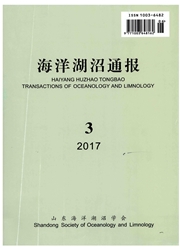

 中文摘要:
中文摘要:
为探讨中国近年来频繁出现的冷冬,基于卫星遥感资料反演出的海洋和大气参数,采用海气热通量算法(COARE3.0)计算得到亚印太海区潜热通量。分析研究了南海区域潜热通量变化和中国冬季气温变化的季节和年际变化特征以及它们之间的联系,结果表明,中国南海区域潜热通量和冬季气温异常变化存在显著的年际变化特征,尤其是中国冬季气温在上世纪1970s代末1980s代初出现一次突变过程,由较常年偏低转为偏高,中国北方的增温幅度高达2℃,南方的增温幅度较小,甚至出现降温现象。由进一步分析可知,中国南海区域潜热通量与华北、东北地区冬季气温变化存在密切关系,当超前16个月潜热通量出现异常偏大(小)时,中国华北和东北地区的冬季气温将会出现异常偏低(高)的趋势。这种关系的揭示将对中国北方冬季气温异常变化的预测具有实用价值。为此,根据它们二者的关系,建立了华北和东北地区冬季气温的预测方程,对2014年冬季气温进行了预测,将会出现较常年偏暖.
 英文摘要:
英文摘要:
Based on the oceanic and atmospheric parameters retrieved by the satellite remote-sensing data using the neural network method, the latent heat fluxes over the South China Sea region were calculated by the advanced method of CORARE3.0 bulk algorithm. It was analyzed that the average annual and the interannual characteristics of the latent heat fluxes and the hiemal air temperatures over China mainland and which there were notable variational characteristics in annual and interannual. Especially, the abrupt changes in the hiemal air temperatures appeared in the end of 1970s and early of 1980s which temperature anomalous changes from lower to higher. It was discussed that the relationship between the latent heat fluxes and the hiemal air temperatures. The results indicate that the relationships be- tween the latent heat fluxes leading 16 months in the South China Sea area and the hiemal air tempera- tures over North China and North East China is close . The hiemal air temperatures over North China and North East China will be higher (lower) when the latent heat fluxes were more (less). The relation between them has practicability for forecast, and then the linear predict equation is obtained by regres sion analysis method based on above result. It was predicted that hiemal air temperatures over North China and North East China in 2014 that was warmer than normal.
 同期刊论文项目
同期刊论文项目
 同项目期刊论文
同项目期刊论文
 期刊信息
期刊信息
